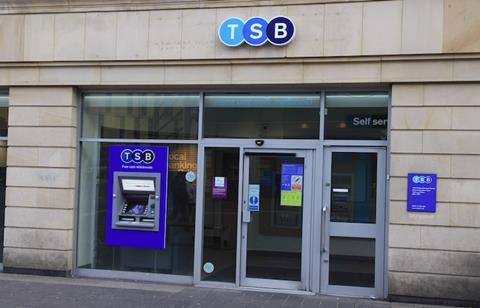
Banking organisation TSB has reported a mean gender pay gap of 31% for hourly fixed pay across its UK-based workforce.
The organisation has reported its gender pay data in its Gender balance matters report, ahead of the April 2018 deadline for compliance with the government's gender pay gap reporting requirements.
TSB has a median gender pay gap of 24% based on hourly fixed pay. The mean gender pay gap for bonus pay is 53%, and the median gender pay gap is 37%. In the 12 months to the snapshot date of 5 April 2017, 88% of women received a bonus compared to 84% of men.
Just under half (48%) of employees in the highest pay quartile at TSB are women, compared to 65% in the second quartile, 78% in the third quartile, and 76% in the lowest pay quartile.
TSB has attributed its gender pay gap to the higher proportion of men in senior management roles and the higher proportion of women in non-senior management roles. More than two-thirds (69%) of non-senior management roles are held by women, compared to 41% of senior management roles. According to TSB's pay analysis, just 1% of the mean gender pay gap is due to the difference in pay between male and female staff within each pay grade.
The organisation’s analysis of its gender pay gap data shows that if TSB were to achieve a 50:50 gender split in non-senior management roles, the mean gender pay gap would reduce by 23 percentage points to 8%. If a 50:50 gender split was also achieved across senior management positions, TSB estimates that its mean gender pay gap would decrease by a further seven percentage points to 1%.
TSB found that six percentage points of the mean bonus gender pay gap are due to the difference in bonus pay between men and women within each grade, and the remaining 47 percentage points are linked to how the workforce is formed.
The bonus gender pay gap has been attributed to two factors. Of the 180 partners who are eligible for TSB’s additional long-term incentive award, the Sustainable Performance Award, two-thirds are men. In addition, 29% of the organisation’s partners, 95% of whom are women, choose to work reduced hours. This in turn means their bonus is delivered on a pro-rata basis to reflect the number of hours they work. TSB estimates that if these employees worked on a full-time basis, the mean gender bonus pay gap would reduce to 47%.
TSB has introduced a range of measures to help close its gender pay gap and help women into more senior positions in the business. This includes launching a recruitment campaign targeted at women who have left financial services roles or have taken a career break and who are now looking to return to work, and expanding the current gender balanced shortlists for external senior level recruitment mechanism to be applied to roles at all levels.
The organisation will also develop a support programme to pair up individuals going on parental leave with a colleague who has been through the same or a similar experience. The bank will also ask each bank executive committee member to champion additional female partners to help develop this talent pool. TSB has also committed to continue to be transparent when talking about gender pay, and to go beyond the regulatory requirements to publish its data and provide a full analysis of the core drivers behind its gender pay gap.
As part of HM Treasury’s Women in Finance Charter, which is a campaign encouraging financial services organisations to increase the representation of women in senior roles, TSB has committed to having between 45% and 55% of its senior roles held by women. To date, TSB has increased the proportion of female partners in senior roles from 37% to 41%.
The gender pay gap reporting regulations require organisations with 250 or more employees to publish the difference between both the mean and median hourly rate of pay for male and female full-time employees; the difference between both the mean bonus pay and median bonus pay for male and female employees; the proportions of male and female employees who were awarded bonus pay; and the proportions of male and female full-time employees in the lower, lower middle, upper middle and upper quartile pay bands.
Helen Rose, chief operating officer and executive sponsor for gender at TSB, said: "This is a really important issue. We welcome this requirement for [organisations] to report their data, because the pace of change by UK business has been far too slow. [Organisations] need to be brave, need to come clean about the issues they face and what they're doing to fix it. Only then will we build a more balanced UK workforce that lasts for the long term."











